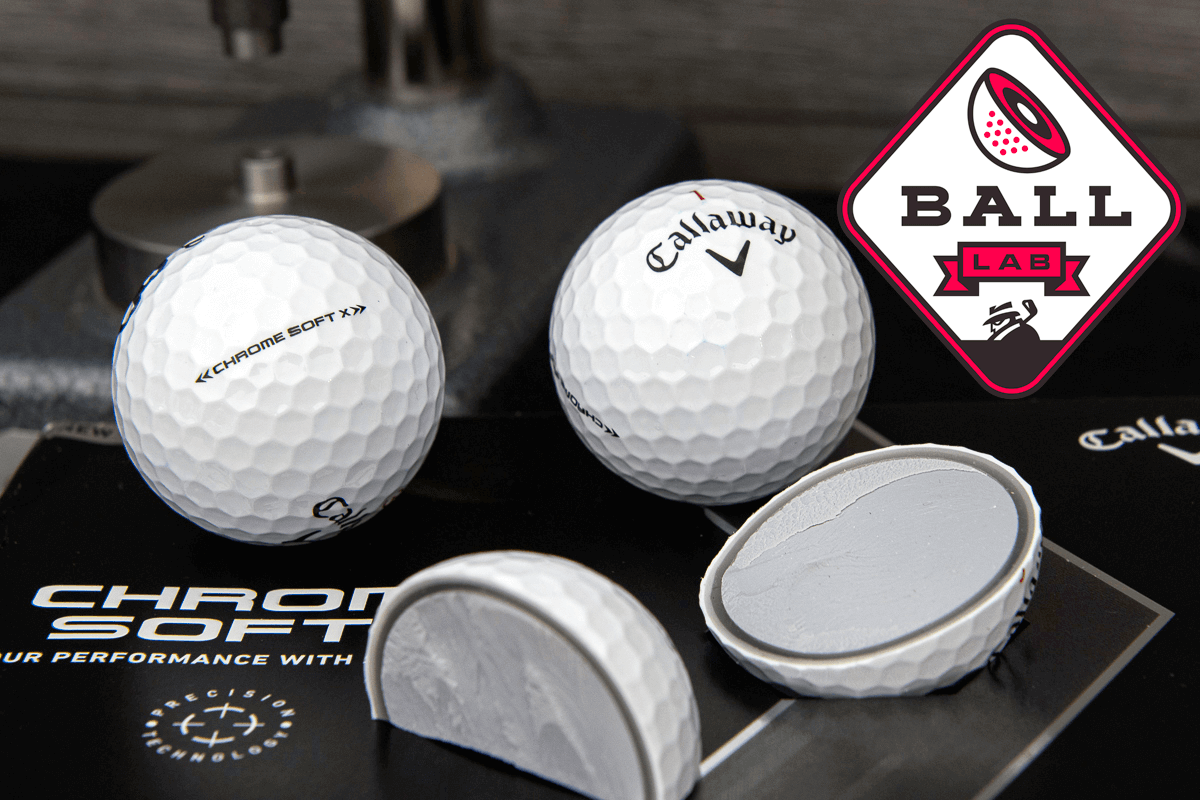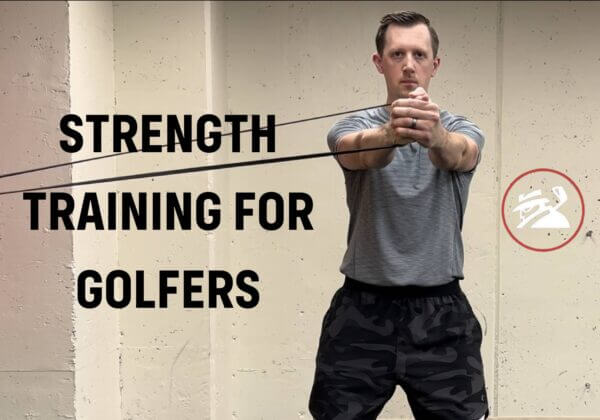MyGolfSpy Ball Lab is where we quantify the quality and consistency of the golf balls on the market to help you find the best ball for your money. Today, we’re taking a look at the 2022 Callaway Chrome Soft X. To learn more about our test process, how we define “bad” balls, check out our About MyGolfSpy Ball Lab page.
About the Callaway Chrome Soft X

Perhaps the most noteworthy thing I can tell you about the Callaway Chrome Soft X is that it’s the company’s most-played ball across the men’s professional tours. Despite that, it’s dwarfed in the retail market by Callaway Chrome Soft.
We’d classify the previous model as mid-flight, high-spin. Our expectation is the 2022 model will offer similar performance characteristics. Worth noting: the prior-gen Chrome Soft X was one of the longest we tested in 2021.
Chrome Soft X Construction
The 2022 Callaway Chrome Soft X features four-piece construction with a TPU (injection-molded) urethane cover. It’s a dual-mantle design as opposed to a dual-core design like the Titleist Pro V1x or Srixon Z-Star XV.
The Chrome Soft X is manufactured by Callaway at its ball plant in Chicopee, Mass.
Compression

On our gauge, the 2022 Callaway Chrome Soft X has an average compression of 95. At the risk of pummeling the proverbial horse into pulp, by no sensible measure does that make for a “soft” ball.
For the sake of comparison, it has the same compression as the Pinnacle range ball and the 2022 Bridgestone Golf Tour B X (Ball Lab review coming soon). It’s slightly softer than a Titleist Pro V1x and slightly firmer than the 2021 TaylorMade TP5x.
Diameter and Weight

Over the three years of Ball Lab, we’ve run into a few issues with the diameter and weight of Callaway balls. We didn’t find any issues with the 2022 Callaway Chrome Soft X.
All of the balls in the sample met the USGA requirements for size and weight.
Inspection
Centeredness and Concentricity
Callaway’s past issues with concentricity are well documented. As the company continues to roll out improvements to its Chicopee factory, we expect we’ll find fewer (and fewer) issues.
In the case of the Chrome Soft X, we flagged only one singular ball as bad. We noted four discrete areas where the outer mantle had melted into the inner mantle. We also observed an area of the outer mantle that was noticeably thinner in one area.
That’s not ideal. However, it’s worth mentioning that, otherwise, concentricity was excellent throughout the sample.
Core Consistency

Core color was generally consistent (again, something that hasn’t always been the case). We did observe some miscellaneous bits of white material in some cores but not to the degree that warranted any serious concern.
Cover
No cover defects were noted.
Callaway Chrome Soft X – Consistency
In this section, we detail the consistency of the 2022 Callaway Chrome Soft X. Our consistency metrics provide a measure of how similar the balls in our sample were to one another relative to all of the models we’ve tested to date.

Weight Consistency.
- There is a bit of wobble from one box to the next with Box 1 being the most inconsistent.
- With an average weight of 1.611 ounces, we’d classify the Chrome Soft X as an average-weight golf ball.
Diameter Consistency
- Diameter consistency for the 2022 Callaway Chrome Soft X falls within the Average range.
- Despite some hills and valleys, the Chrome Soft X is generally consistent with all balls falling within normal limits.
- The diameter of the balls falls within the average range relative to the market as a whole.
Compression Consistency
- Compression consistency also qualifies as Average.
- As you can see from the chart above, Box 1 was definitely a little squirrelly with the sixth ball in the sample being far enough from the average that we flagged it as bad.
- Across the entire sample, the compression delta was 12 points—higher than we like to see.
True Price
True Price is how we quantify the quality of a golf ball. It's a projection of what you'd have to spend to ensure you get 12 good balls.
The True Price will always be equal to or greater than the retail price. The greater the difference between the retail price and the True Price, the more you should be concerned about the quality of the ball.

Callaway Chrome Soft X – Summary
To learn more about our test process, how we define “bad” balls and our True Price metric, check out our About MyGolfSpy Ball Lab page.
As we mentioned, Callaway continues to improve its Chicopee ball plant so by no means will this be the final word on the Chrome Soft family. That said, it’s clear the company still has plenty of opportunities for improvement.

The Good
- Average consistency for all of our metrics across the sample.
- All of the balls conformed to the USGA rules.
The Bad
- Two bad balls in the sample
- More wobble in our charts than we see from top-quality brands
At the time of review, the 2022 Callaway Chrome Soft X gets an overall grade of 75.















Emery
1 year ago
I do so well on the Driving Range that I’m considering using a Pinnacle. Have always used premium PV’s, TP5x, CS XLS but found a regular Truvis the other day and seemingly cannot loose this ball! I did use to play Strata Balata and DT100 Wounds & Wilson DC3 so, Truvis might be better than those, it’s all relative.